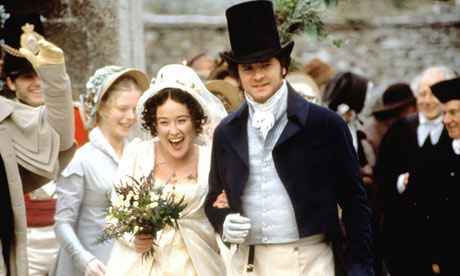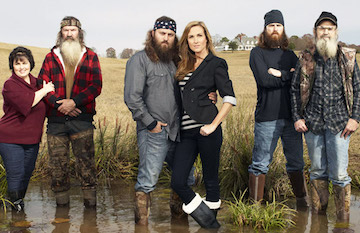Last week, I went to see Fifty Shades of Grey.
I’m going to let you take a moment to process that.
Okay. So. There is certainly much to say about the sadomasochistic elements of the film. Jim Downs does a nice job situating these acts (particularly whipping) in entertainment culture and the context of the white privilege in his piece for HuffPo. The film’s emphasis on sex and eroticism is certainly its most spectacular feature, and is likely what draws the curious to the theater. But let’s set aside the riding crops and the peacock feathers and the silk cords for now, and focus on the other component of the film that draws viewers in: the allure of narrative.
The Fifty Shades novels and the film (a first installment of three) have been tremendously popular not because they are well-written or brilliantly acted (they are not) but because E.L. James has done a pretty smart thing, which is to do as Stephenie Meyer did in her smash hit Twilight series, which is to steal many, many pages from Jane Austen.
For what are Anastasia and Christian and Bella and Edward but modern (and in the latter case, fantastical) versions of Mr. Darcy and Elizabeth Bennet? Fifty Shades includes several references to Austen: Jennifer Ehle, who played Lizzie in the BBC production of Pride and Prejudice (1995), plays Anastasia’ mother. And at one point early in the film, Christian asks Anastasia which author inspired her to become an English Lit major: “Was it Bronte, Austen, or Hardy?” She claims it was Hardy (I am dubious) and Christian subsequently sends her first editions of Tess of the D’Ubervilles, the story of a fallen woman, seduced by a man she does not love.

Fifty Shades does reference Tess in many ways, but its narrative – like Twilight’s – ultimately falls more into line with Pride and Prejudice. The couples seem to be mismatches: she is young and sarcastic and somewhat adrift; he is much older, aloof, and obsessed with her. Their courtships are fractious, and they encounter several obstacles to the relationship: instead of class difference as in Austen, these modern novels and films present different kinds of complications: vampirism; a red room full of sex toys.
The allure of these novels and films is rooted in this combination: the classic narrative, with a twist. Musing about this made me think back on a meeting I had back in January with the History Channel.
You didn’t see that transition coming, did you?
Here’s what happened. I was invited to meet with some History Channel programmers, and pitch some ideas for television shows. The meeting came to nothing (no surprise) but there was one moment that has stuck with me. At the beginning of the meeting, one of the executives from A&E (which owns the History Channel) explained the reasons for the channel’s recent successes, particularly in the category of reality television. He talked about seeing an early version of “Duck Dynasty” on another channel and immediately grasping how he could improve it: he would insert several plot devices and show rituals to evoke his favorite childhood television series, “The Waltons.” In essence, he made “Duck Dynasty” a hit by combining the genres and the narrative styles of the reality show and the family drama.

The more I thought about this, the more it seemed that this might be the key to creating ground breaking and irresistible television shows and films: playing around with genre, creating unusual combinations, writing narrative mashups. “Homeland,” for example, is both psychological drama and spy thriller. “Breaking Bad” and “The Sopranos” combine crime and family dramas. “Sleepy Hollow” reimagines American history through science fiction and fantasy.
Thinking about film, television, and narrative in this way leads me to ask: can historians use these strategies in their own writing? Most academic historians write books driven by argument and deep research in primary documents. Some are big, sweeping syntheses and others are biographies or micro-histories, but for the most part, they all use either thematic or chronological structures.
It is possible to experiment with these classic narratives, to create mashups while retaining a focus on argument and the rigorous use of evidence? Ari Kelman’s new graphic history of the American Civil War, Battle Lines, offers an example of how this might work, by conveying the war’s histories in both word and image, rendered in the colors of dirt and blood. Are there other historical narratives that do as Fifty Shades, Twilight, and “Duck Dynasty” do, that are classic, but with a twist?
Think on it, and let me know. I’ll just be over here with this peacock feather.
I don’t know if this exactly qualifies as what you’re getting at here because it uses a chronological structure, but I always conceived my own book as a mashup of the type of popular campaign studies I’ve always enjoyed (by folks like Sears, Trudeau, Rhea) with social and political history. But your post also got me thinking about the fact that I’ve always wanted to see more academic/professional historians get involved in writing historical fiction. Or screenplays. I nominate you.
Glenn, I think you’re talking more about interdisciplinary approaches/methodologies with your military/social/political history mashup. I’m thinking more about combinations in form. So how would you reconceptualize/rewrite your book as a family drama? Or using the T.V. drama format of “long arc” “plots” imbedded in or interspersed with more focused, contained subjects? Or as historical fiction?
And you’re very kind to nominate me to bring more history to Hollywood. Unfortunately, my meeting with the History Channel was not encouraging on that front …
I’ve actually sort of fantasized about writing a screenplay about a fictionalized slave on the Virginia Peninsula during the Peninsula Campaign, following his choices and decisions (interacting with the slave community and his family) in deciding to flee to the Union army, as well as the impact that his presence in camp has on a fictionalized Union soldier and his views on race and the importance of black assistance and emancipation to win the war. The irony is that I had one advisor suggest that I actually do something like that within the context of my book. (His exact words were that I should “invent a slave,” rooting their experience and choices within the context of real sources.) I was resistant to that, because I felt that it would more properly belong in a work of fiction. But if I am hearing you right, you’re suggesting something similar.
I can certainly see the appeal of merging the graphic style with history. My imagination fails at the prospect of meeting with History Channel programmers!